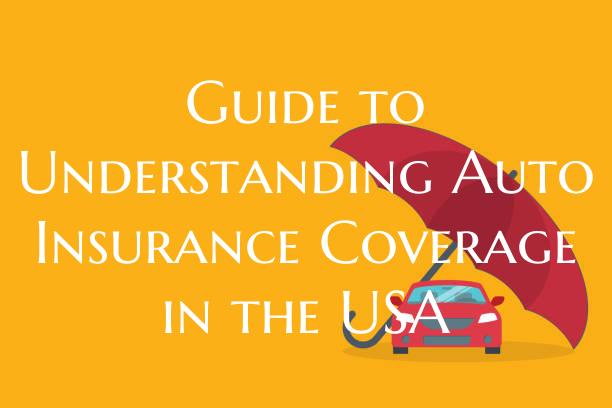Auto insurance is a vital aspect of owning a vehicle in the United States. It not only protects you financially in case of an accident but is also required by law in most states. Understanding the various components of auto insurance coverage is crucial to ensuring you have the right protection in place. This guide will break down the key aspects of auto insurance coverage in the USA to help you make informed decisions.
Types of Coverage:
1. Liability Coverage: This is the most basic type of auto insurance and is usually required by law. It covers the cost of injuries and property damage that you may cause to others in an accident. Liability coverage is typically expressed as three numbers (e.g., 25/50/25), representing the coverage limits for bodily injury per person, bodily injury per accident, and property damage, respectively.
2. Collision Coverage: This type of coverage helps pay for repairs to your vehicle if you are involved in a collision with another vehicle or object, regardless of fault.
3. Comprehensive Coverage: Comprehensive coverage protects your vehicle from non-collision incidents, such as theft, vandalism, natural disasters, or hitting an animal.
4. Uninsured/Underinsured Motorist Coverage: This coverage steps in if you are involved in an accident with a driver who has little or no insurance. It helps cover your medical expenses and property damage.
5. Personal Injury Protection (PIP): PIP coverage pays for medical expenses for you and your passengers in case of an accident, regardless of fault.
Factors Affecting Coverage:
1. Driving Record: Your driving history, including accidents and tickets, can impact the cost and availability of auto insurance coverage.
2. Vehicle Type: The make and model of your vehicle, as well as its age and safety features, can affect the cost of your insurance premiums.
3. Location: Where you live can also influence your insurance rates, as densely populated areas or areas prone to severe weather may have higher premiums.
4. Coverage Limits and Deductibles: The amount of coverage you choose and the deductible you select will directly impact your premium costs.
Tips for Choosing Auto Insurance Coverage:
1. Review Your State's Minimum Requirements: Make sure you meet the minimum auto insurance requirements in your state.
2. Consider Your Needs: Assess your driving habits, the value of your vehicle, and your financial situation to determine the amount of coverage you need.
3. Shop Around: Compare quotes from multiple insurance providers to find the best coverage at a competitive rate.
4. Bundle Policies: Consider bundling your auto insurance with other policies, such as homeowners or renters insurance, to potentially save on premiums.
5. Ask Questions: Don't hesitate to ask your insurance provider questions about your coverage options and any discounts you may be eligible for.
By understanding the different types of auto insurance coverage available in the USA and considering the factors that influence coverage, you can make informed decisions to protect yourself and your vehicle on the road. Be proactive in reviewing your policy regularly and adjusting your coverage as needed to ensure you have adequate protection.

